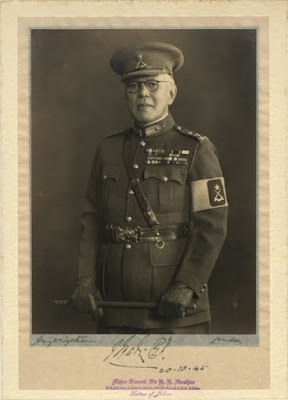Sultan Ibrahim of Johor (1873-1959)
Sultan Abu Bakar passed away in London, UK, on 4 June 1895 only months after the grand ball at Istana Tyersall. His body was shipped back to Johor where he was laid to rest at the royal mausoleum at Makam Mahmoodiah on 7 September 1895. The creator of Istana Tyersall, his Sultana Fatimah, had been buried there four years earlier in 1891.
His son, Tunku Ibrahim was installed as the new Sultan of Johor in November 1895. Sultan Ibrahim’s reign was to span more than six decades, encompassing two world wars and a host of sensational and dramatic events. Palace of Ghosts dedicates five chapters to this transformative period, during which the Tyersall estate underwent significant changes that in many ways mirrored the sweeping geopolitical and social shifts in both Singapore and Johor. A frequently controversial figure, Sultan Ibrahim's life is a fascinating tale of immense wealth, power, heartbreak, and tragedy—recurring themes woven throughout the narrative of Palace of Ghosts: Singapore's Untold History.
Find Out More: Read the Book Here
For our friends in Johor, and indeed the rest of Malaysia, he needs no introduction: his great-grandson currently sits on the throne as King of Malaysia. For others, who may not know, this post introduces the man who plays such a central role in Palace of Ghosts and who had a profound impact on the economic and potlical fortunes of Singapore, Johor and the wider region. With the greatest respect to his Highness, the current King of Malaysia, it was the Sultan Ibrahim, and before him his father Sultan Abu Bakar, who first brought Johor to the attention to the rest of the world at the turn of the 20th century.
A postcard from around 1900 showing Sultan Ibrahim in a Mercedes automobile. (National Museum of Singapore)
A postcard of Sultan Ibrahim of Johor riding at the head of the Johor Miliary Force on the occassion of the King's birthday parade in Singapore in the 1920s.
A 1935 Johor postage stamp depicting Sultan Ibrahim of Johor with his Scottish wife Sultana Helen.
A portrait of Sulthan Ibrahim of Johor taken later in life, probably in the early 1950s.
This collection of public domain images offers only a glimpse into the many layers of his complex personality and the pivotal events in which he played a leading role. His public and private lives became deeply intertwined with the political and economic transformations—and upheavals—of both Singapore and Johor. Once reputed to be the world’s wealthiest man, he enjoyed immense fame and popularity across Europe and Asia during the 1930s and 1940s. To uncover these fascinating stories and more, follow the link below for Palace of Ghosts: Singapore's Untold History.










Comments
Post a Comment